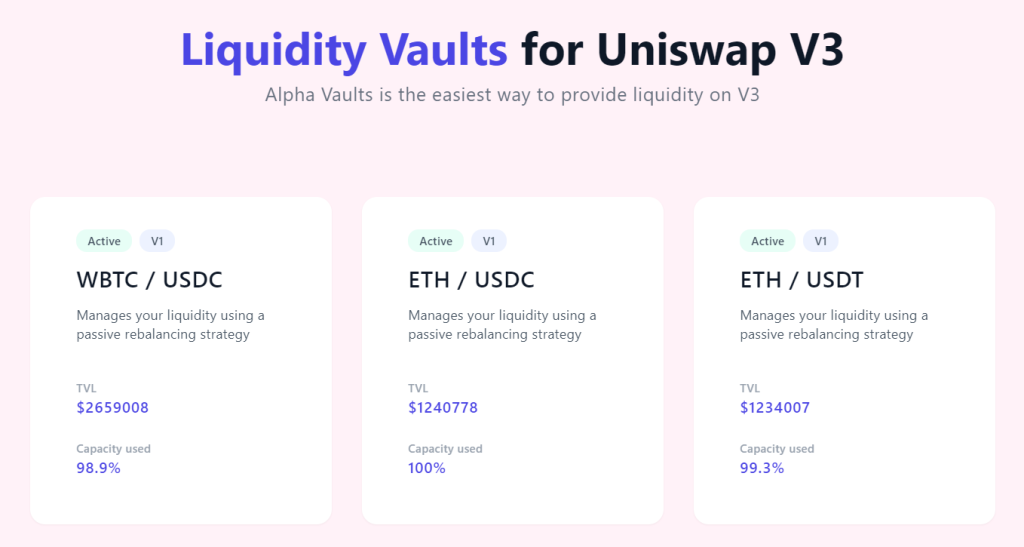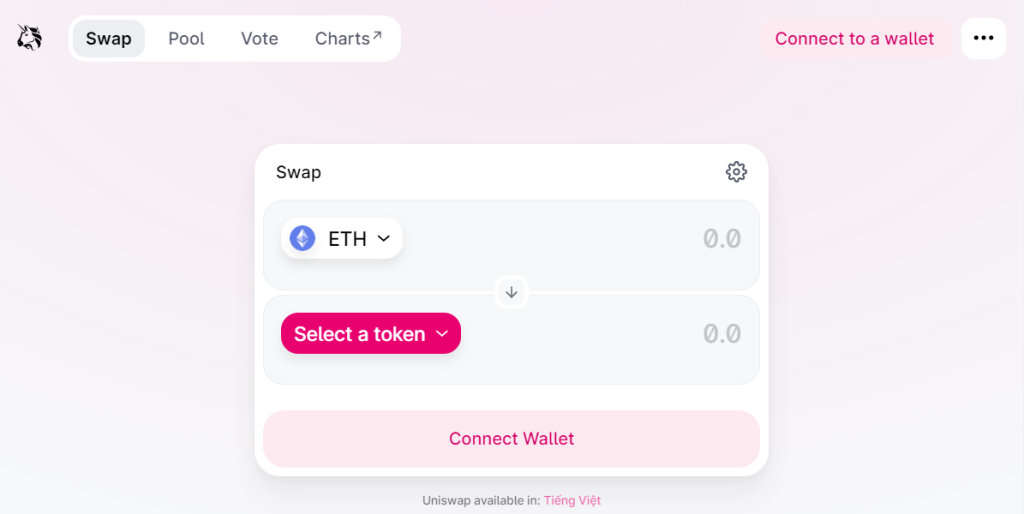
Uniswap v3 gas costs vary depending on network congestion and transaction complexity. For simple token swaps, gas fees typically range from $4 to $10, while adding or removing liquidity can cost between $8 to $20. During high network activity, fees can be higher. Using tools like ETH Gas Station can help estimate current gas prices.
Understanding Gas Fees on Uniswap v3
What Are Gas Fees?
Gas fees are the costs required to conduct transactions or execute contracts on the Ethereum blockchain, which Uniswap v3 operates on. These fees compensate network participants, known as miners, for the computational power and resources they use to process and validate transactions. On Uniswap v3, gas fees are incurred for various actions such as token swaps, adding or removing liquidity, and interacting with smart contracts.
- Transaction Fees: Every transaction on Uniswap v3 requires a certain amount of gas, paid in ETH. This includes swaps, liquidity provision, and other interactions.
- Network Operations: Gas fees ensure the smooth functioning of the Ethereum network by prioritizing transactions based on the gas price users are willing to pay.
- Incentivizing Miners: Higher gas fees can incentivize miners to process transactions faster, making them a critical part of the Ethereum ecosystem.
How Gas Fees Are Calculated
Gas fees on Uniswap v3 are calculated based on the complexity of the transaction and the current state of the Ethereum network. Here’s a breakdown of how they are determined:
- Gas Limit: The gas limit is the maximum amount of gas you’re willing to pay for a transaction. It reflects the complexity of the transaction. For instance, a simple token transfer may require less gas than a complex smart contract interaction.
- Gas Price: The gas price, measured in gwei (a small fraction of ETH), is the amount you’re willing to pay per unit of gas. This is determined by market demand and network congestion. Higher gas prices can prioritize your transaction over others.
- Total Gas Fee: The total gas fee is calculated by multiplying the gas limit by the gas price. For example, if the gas limit is 100,000 units and the gas price is 50 gwei, the total gas fee would be 5,000,000 gwei or 0.005 ETH.
- Network Congestion: During times of high network activity, gas prices can increase significantly as users compete to get their transactions processed quickly. Conversely, during off-peak times, gas prices can be lower.

Factors Affecting Gas Costs
Network Congestion
Network congestion is one of the primary factors affecting gas costs on Uniswap v3. Here’s how it impacts transaction fees:
- High Demand: When many users are trying to execute transactions simultaneously, the demand for processing power increases. This competition for block space drives up gas prices as users are willing to pay more to prioritize their transactions.
- Peak Times: Gas fees tend to be higher during peak times, such as during significant market events or popular DeFi activities. Monitoring network activity and choosing off-peak times for transactions can help reduce costs.
- Mempool Size: The mempool, where pending transactions wait to be processed, can become crowded during congestion. Transactions with higher gas prices are prioritized, while lower gas price transactions may experience delays or require resubmission with higher fees.
Transaction Complexity
The complexity of a transaction also significantly impacts gas costs. Here’s how different factors contribute:
- Smart Contract Interactions: Transactions involving smart contracts, such as swapping tokens or adding liquidity on Uniswap v3, are more complex and require more computational resources. This results in higher gas fees compared to simple ETH transfers.
- Token Transfers: Transferring ERC-20 tokens involves additional steps compared to transferring ETH, leading to higher gas fees due to the extra computational effort required.
- Contract Calls: Complex contract calls, such as those involving multiple functions or interactions with other contracts, increase the gas limit needed. Examples include executing a multi-step DeFi strategy or using advanced features on Uniswap v3.
- Approval Transactions: Before trading or adding liquidity, users often need to approve token allowances. These approval transactions incur separate gas fees and add to the overall cost.
- Gas Limit Settings: Users can set custom gas limits for their transactions. While higher limits ensure the transaction will be processed even if it becomes more complex than anticipated, it also increases the total gas fee. Setting an appropriate gas limit based on the expected complexity helps manage costs.
Estimating Gas Fees Before Trading
Using Gas Fee Estimator Tools
Gas fee estimator tools are essential for predicting and managing gas costs before executing trades on Uniswap v3. Here’s how to use them:
- ETH Gas Station: A popular tool that provides real-time gas price estimates for different transaction speeds (e.g., standard, fast, rapid). By checking ETH Gas Station, users can choose an appropriate gas price based on their urgency and budget.
- Website: ETH Gas Station
- Features: Displays gas prices in gwei, estimates transaction confirmation times, and shows historical gas price trends.
- Etherscan Gas Tracker: Etherscan’s Gas Tracker offers detailed information on gas prices, including the average, high, and low prices. It also provides insights into network congestion and pending transactions.
- Website: Etherscan Gas Tracker
- Features: Real-time gas price updates, customizable alerts, and fee estimations for various transaction types.
- Blocknative Gas Estimator: This tool gives users an intuitive interface to estimate gas fees and provides recommendations for optimizing costs.
- Website: Blocknative Gas Estimator
- Features: Live gas price predictions, historical data, and customizable notifications.
Checking Current Gas Prices
Regularly checking current gas prices helps you make informed decisions about when to execute transactions. Here’s how to monitor gas prices effectively:
- Wallet Integration: Many cryptocurrency wallets, like MetaMask, display current gas prices directly in their interface. Before confirming a transaction, check the suggested gas prices and adjust if necessary.
- MetaMask: Shows low, average, and high gas price recommendations within the transaction confirmation screen.
- Trust Wallet: Provides estimated gas fees and allows users to set custom gas prices.
- DeFi Platforms: Platforms like Uniswap often integrate gas price estimators directly into their interfaces, providing users with real-time fee estimates before trading.
- Uniswap Interface: Shows estimated gas fees during the transaction setup, allowing users to adjust their settings accordingly.
- Gas Price Alerts: Set up gas price alerts through services like ETH Gas Station or Etherscan. These alerts notify you when gas prices fall below a certain threshold, helping you execute transactions at lower costs.
- Setting Alerts: Use email or browser notifications to receive real-time updates on gas price changes.

Reducing Gas Fees on Uniswap v3
Timing Your Transactions
Strategically timing your transactions can significantly reduce gas fees on Uniswap v3. Here’s how to optimize your transaction timing:
- Avoid Peak Hours: Gas fees are typically higher during peak network activity times. Try to execute your transactions during off-peak hours, such as late at night or early in the morning (UTC time), when fewer users are active.
- Monitor Network Activity: Use tools like ETH Gas Station, Etherscan Gas Tracker, or Blocknative to monitor real-time network activity and gas prices. These tools can help you identify periods of lower congestion.
- ETH Gas Station: Provides real-time data on gas prices and transaction confirmation times.
- Etherscan Gas Tracker: Offers insights into current and historical gas prices, helping you plan your transactions.
- Set Alerts: Set up alerts through gas price tracking services to notify you when gas prices drop below a certain threshold. This way, you can quickly act when gas fees are low.
- Gas Price Alerts: Services like ETH Gas Station and Etherscan allow you to configure email or browser notifications for gas price changes.
Using Layer 2 Solutions
Layer 2 solutions are designed to reduce transaction costs and improve scalability by processing transactions off the main Ethereum blockchain. Here’s how you can use them to lower gas fees on Uniswap v3:
- Optimism: Optimism is a popular Layer 2 scaling solution that significantly reduces gas fees while maintaining security and decentralization. Uniswap v3 supports Optimism, allowing users to trade and provide liquidity with lower transaction costs.
- How to Use Optimism:
- Bridge Assets: Use the Optimism Gateway to bridge your assets from the Ethereum mainnet to the Optimism network.
- Connect Wallet: Connect your wallet to the Optimism network in the Uniswap interface.
- Trade and Provide Liquidity: Execute transactions on Uniswap v3 with reduced gas fees using Optimism.
- How to Use Optimism:
- Arbitrum: Arbitrum is another Layer 2 solution that enhances transaction efficiency and reduces gas fees. It’s supported by Uniswap v3, enabling users to benefit from lower costs.
- How to Use Arbitrum:
- Bridge Assets: Transfer your assets to the Arbitrum network using the Arbitrum Bridge.
- Connect Wallet: Switch your wallet to the Arbitrum network in the Uniswap interface.
- Trade and Provide Liquidity: Conduct trades and liquidity provision on Uniswap v3 with lower gas fees using Arbitrum.
- How to Use Arbitrum:
- Polygon (formerly Matic): While not a Layer 2 in the strictest sense, Polygon provides a scaling solution that can reduce transaction fees and improve speeds. Uniswap is exploring integration with Polygon for further cost savings.
- How to Use Polygon:
- Bridge Assets: Move your assets to the Polygon network using the Polygon Bridge.
- Connect Wallet: Switch your wallet to the Polygon network.
- Trade and Provide Liquidity: Use Uniswap v3 on the Polygon network (once supported) to benefit from lower gas fees.
- How to Use Polygon:

Comparing Uniswap v3 Gas Fees to Other Platforms
Uniswap v2 vs. Uniswap v3
Uniswap v3 offers several improvements over v2, particularly in terms of gas efficiency and flexibility:
- Gas Efficiency:
- Uniswap v2: Transactions on Uniswap v2 generally require higher gas fees due to less efficient smart contract architecture.
- Uniswap v3: Uniswap v3 introduced more gas-efficient contracts, particularly for actions like adding liquidity and swapping tokens. This can result in lower overall gas costs compared to v2.
- Flexibility and Customization:
- Uniswap v2: Provides a straightforward user experience with a single fee tier and no ability to customize liquidity positions.
- Uniswap v3: Allows liquidity providers to choose between multiple fee tiers (0.05%, 0.30%, and 1.00%) and specify price ranges for their liquidity. While this added flexibility can optimize returns, it also requires more complex transactions, potentially impacting gas costs.
- Advanced Features:
- Uniswap v3: Features like concentrated liquidity and range orders can make transactions more complex, which might increase gas usage. However, the enhanced capital efficiency can offset higher initial gas costs over time.
Other Decentralized Exchanges
Comparing Uniswap v3’s gas fees with other decentralized exchanges (DEXs) can provide insights into cost-effectiveness and efficiency:
- Sushiswap:
- Gas Fees: Generally similar to Uniswap v2 since it was initially a fork of Uniswap v2. However, SushiSwap has implemented some optimizations that can make certain transactions slightly cheaper.
- Features: Offers additional features like yield farming and staking, which can influence overall transaction costs depending on usage.
- Balancer:
- Gas Fees: Balancer’s multi-token pools and dynamic fee structure can lead to higher gas costs, especially for complex transactions involving multiple tokens.
- Features: Allows for the creation of customizable pools with varying token weights, providing unique liquidity provisioning opportunities at the cost of potentially higher gas fees.
- Curve Finance:
- Gas Fees: Curve Finance is optimized for stablecoin trading and typically offers lower gas fees for swaps involving stablecoins due to its specialized smart contracts.
- Features: Provides low-slippage and low-fee trading for stablecoins, making it a preferred choice for stablecoin swaps compared to Uniswap v3.
- 1inch Exchange:
- Gas Fees: As an aggregator, 1inch splits orders across multiple DEXs to find the best prices and gas efficiency. This can sometimes lead to lower gas fees, but complex transactions might incur higher costs.
- Features: Offers gas token rebates and optimized routing to reduce gas costs, providing competitive alternatives to Uniswap v3.

Monitoring and Managing Gas Fees
Setting Gas Limits
Setting appropriate gas limits is crucial for ensuring your transactions are processed efficiently without overpaying. Here’s how to manage gas limits effectively:
- Understanding Gas Limits: The gas limit is the maximum amount of gas you are willing to spend on a transaction. It reflects the computational complexity of the transaction. If the gas limit is too low, the transaction may fail and consume the provided gas without completing.
- Default Gas Limits: MetaMask and other wallets often suggest default gas limits based on the type of transaction. For instance, a simple ETH transfer might have a lower gas limit compared to a complex DeFi interaction.
- Custom Gas Limits: For transactions with smart contracts, you might need to adjust the gas limit manually:
- MetaMask Settings: When initiating a transaction, click on “Edit” next to the gas fee. Choose “Advanced” to manually set the gas limit.
- Typical Values: A standard token transfer might require a gas limit of around 21,000 units, while more complex transactions, such as providing liquidity on Uniswap v3, might require up to 200,000 units or more.
- Avoid Overestimation: Setting a gas limit too high doesn’t mean you’ll pay more than necessary; you only pay for the gas used. However, setting it too low can cause the transaction to fail.
Adjusting Gas Price in MetaMask
Adjusting the gas price allows you to prioritize your transaction based on urgency and current network conditions. Here’s how to do it in MetaMask:
- Understanding Gas Price: The gas price, measured in gwei, is the amount you’re willing to pay per unit of gas. Higher gas prices can speed up your transaction processing by incentivizing miners to include it in the next block.
- Using Suggested Gas Prices: MetaMask provides suggested gas prices for different transaction speeds (e.g., slow, average, fast). These suggestions are based on current network conditions and can be adjusted:
- Initiating a Transaction: When you start a transaction, MetaMask will display the suggested gas prices.
- Editing Gas Price: Click on “Edit” next to the gas fee. In the “Basic” settings, you can choose between slow, average, and fast options. For more control, select “Advanced.”
- Advanced Gas Price Settings: In the “Advanced” settings, you can manually adjust the gas price:
- Optimal Gas Price: Check current gas prices using tools like ETH Gas Station or Etherscan Gas Tracker to determine an optimal price.
- Manual Adjustment: Enter your desired gas price (in gwei) based on how quickly you need the transaction processed and your willingness to pay.
- Confirming Changes: After adjusting the gas price and limit, review the total estimated fee before confirming the transaction.

Real-World Examples of Gas Costs
Typical Costs for Small Trades
Understanding the typical gas costs for small trades on Uniswap v3 can help you budget and plan your transactions effectively. Here are some examples:
- Simple Token Swap:
- Description: Swapping a small amount of ETH for an ERC-20 token.
- Gas Limit: Approximately 100,000 to 150,000 units.
- Gas Price: Varies depending on network congestion, typically around 20-50 gwei during average conditions.
- Estimated Cost:
- At 20 gwei: 0.002 ETH (about $4 at $2,000/ETH).
- At 50 gwei: 0.005 ETH (about $10 at $2,000/ETH).
- Token Transfer:
- Description: Transferring an ERC-20 token to another wallet.
- Gas Limit: Approximately 50,000 to 80,000 units.
- Gas Price: Typically around 10-30 gwei.
- Estimated Cost:
- At 10 gwei: 0.0005 ETH (about $1 at $2,000/ETH).
- At 30 gwei: 0.0015 ETH (about $3 at $2,000/ETH).
Gas Costs for Large Liquidity Transactions
Larger and more complex transactions, such as adding or removing liquidity on Uniswap v3, involve higher gas costs. Here are some examples:
- Adding Liquidity to a Pool:
- Description: Adding liquidity to a pool involving a pair of tokens, such as ETH/USDC.
- Gas Limit: Approximately 200,000 to 300,000 units.
- Gas Price: Typically around 20-50 gwei.
- Estimated Cost:
- At 20 gwei: 0.004 ETH (about $8 at $2,000/ETH).
- At 50 gwei: 0.01 ETH (about $20 at $2,000/ETH).
- Removing Liquidity from a Pool:
- Description: Withdrawing liquidity from a pool and receiving the corresponding tokens.
- Gas Limit: Approximately 200,000 to 300,000 units.
- Gas Price: Typically around 20-50 gwei.
- Estimated Cost:
- At 20 gwei: 0.004 ETH (about $8 at $2,000/ETH).
- At 50 gwei: 0.01 ETH (about $20 at $2,000/ETH).
- Complex Transactions:
- Description: More complex interactions, such as executing a series of trades or multi-step DeFi strategies.
- Gas Limit: Can exceed 400,000 units depending on the complexity.
- Gas Price: Typically around 20-50 gwei.
- Estimated Cost:
- At 20 gwei: 0.008 ETH (about $16 at $2,000/ETH).
- At 50 gwei: 0.02 ETH (about $40 at $2,000/ETH).